What kind of PC do you need for game development?
Want to make games yourself? We talked to developers and assembled PC builds for making 2D games and 3D games.

Anyone who ever wanted to get Crysis running above 8fps has researched enough about PC hardware to know the basics. Buy the best GPU you can afford, don’t upgrade your CPU every generation, and and anything more than 16GB of RAM is probably overkill—Charles Babbage could have given you this advice when he was first devising the concept of a programmable computer in in the early 1800s.
Looking for more PC building advice? Check out our build guides:
Budget gaming PC
(~$750/£750) - A good entry-level system.
Mid-range gaming PC
(~$1,250/£1,250) - Our recommended build for most gamers.
High-end gaming PC
(~$2,000/£2,000) - Everything a gamer could want.
Extreme gaming PC
(>$3,000/£3,000) - You won the lotto and are going all-in on gaming.
Prefer to buy a prebuilt than building it yourself? Check out our guide to the Best Gaming PCs.
But what if you want to put together a set of components not simply for gaming, but to build games with? Do those old maxims still hold true, or do the demands of game development require a different strategy? We spoke to several indie developers and scoured dev forums to gain an insight into what makes a good development PC.
The message from all those sources is encouraging if you’re just starting out: the barrier for entry is low. You certainly don’t need anything fancier or more costly than the average gaming PC, and depending on the nature of your project, you can get away with much, much less: many developers work on a laptop using integrated graphics and dual-core CPUs.
In fact, sacrilege as it may be, you don’t even need a PC. Several developers we spoke to work on Macs, including Volume and Thomas Was Alone creator Mike Bithell, who told us "I just prefer the user experience." So if you’re reading this on a Macbook Pro, know that the door to development is still very much open to you. Traitor.
The other principle we saw consistently is that, unsurprisingly, the required specs of your machine totally depend on the type of game you want to make, and the engine you work with. For that reason, we’ve broken down this build guide into two different PC builds: one cheaper machine for 2D game development using Game Maker or similar 2D game engines, and another pricier PC for 3D development in Unity or Unreal Engine 4. You might feel more professional working on a rig with two GTX 1080 Tis whirring away inside it, but the impact they’ll have on your Breakout clone will be minimal. With that said, let’s start component-shopping.
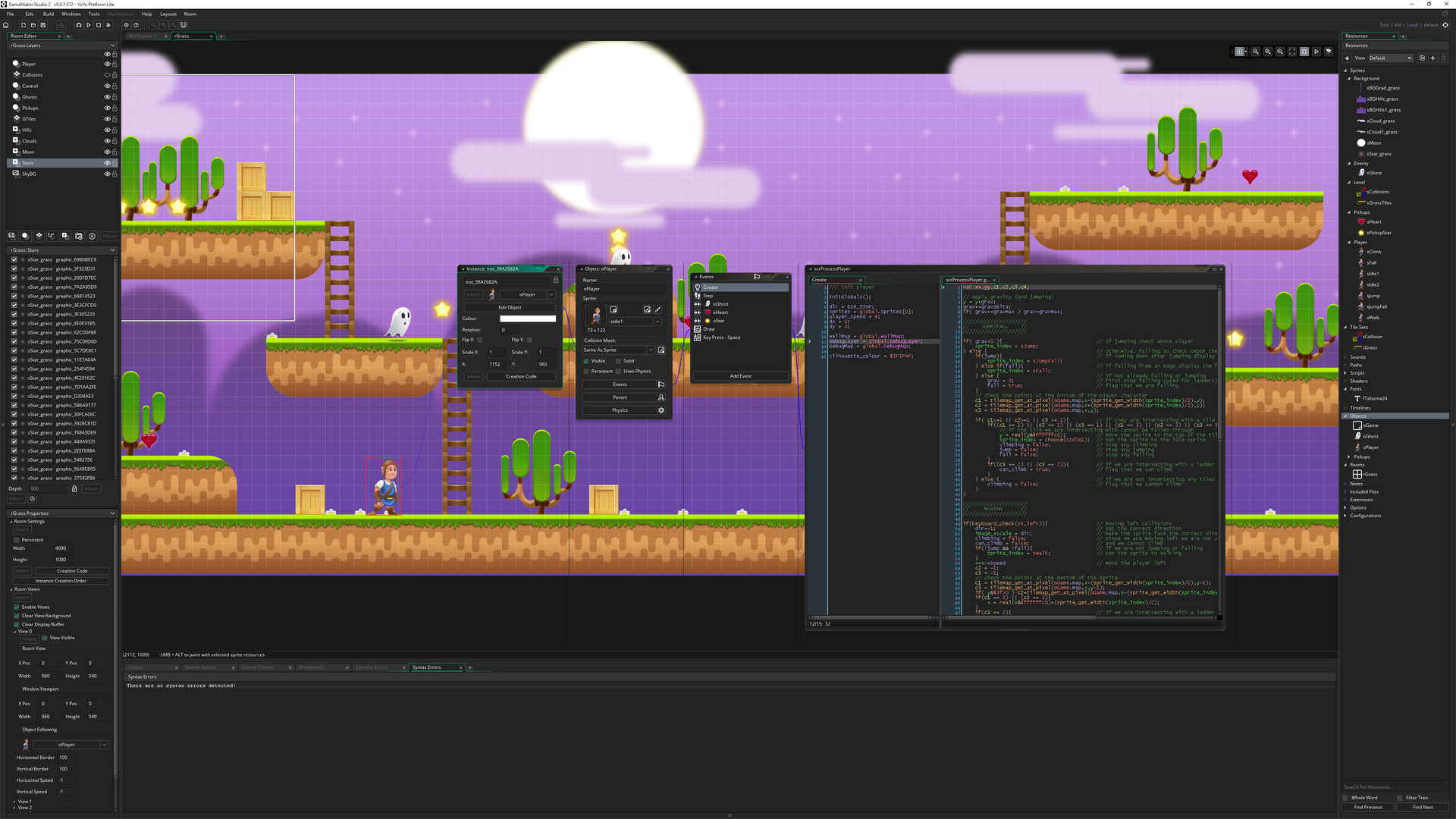
2D game development
PC Gamer's got your back
First and foremost, remember that game development’s possible on basically any PC. In this day and age if you’ve got two lollipop sticks and an elastic band you can probably get them to boot Windows and compile code somehow, so don’t take our recommended parts as a minimum requirement. You can get by with a cheap laptop; this guide aims for better performance than that.
Game Maker 2.0’s minimum specs do specify a DX11 graphics card, so if you’re looking to work with that particular engine you’ll need at least a CPU with DX11 integrated graphics. That’s 3rd-generation Core CPUs with Intel HD Graphics 4000/2500. Otherwise the requirements are light: a 64-bit dual-core CPU, and 2GB of RAM.
Let’s drill down into the components, going through the important facets of each.
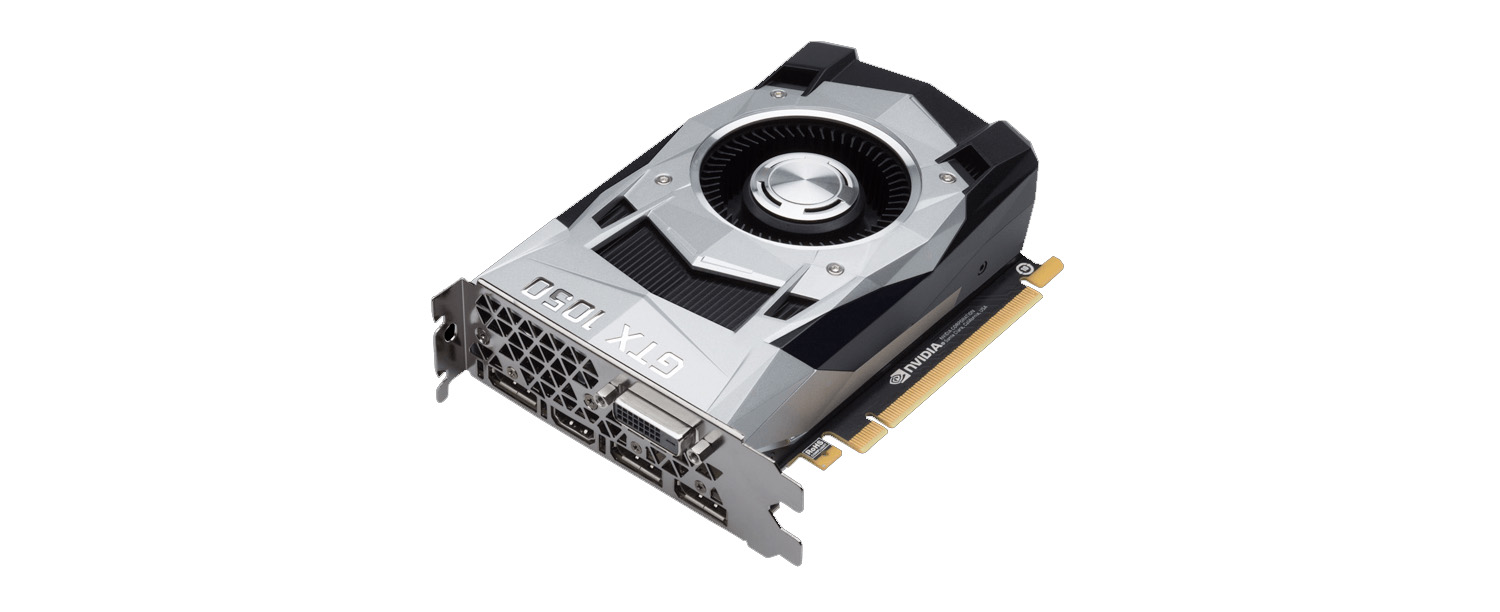
Graphics card
- Dedicated card is a priority
- DirectX 11 compatible and onwards
- At least 2GB of video RAM
Graphics hardware is as much of a priority in development as it is in gaming, indeed more if you’re working with powerful 3D engines or in VR. But for simple projects in 2D using Game Maker or Unity, you can get away with using your CPU’s onboard graphics if they meet the engine’s minimum specs.
Hung Mai, who developed solo venture Trianga’s Project: Battle Splash 2.0 using two laptops, tells us: "In some cases like 2D and/or simple games, everything can be calculated by using CPU and RAM alone."
A dedicated card is a luxury rather than a requirement, then, but a highly recommended luxury. Generally the more graphics processing power and memory you have available, the smoother your experience in a development environment will be.
As with gaming, it always makes sense to invest in the newest generation of hardware available, so we’ve chosen a lower end GTX 1050 Ti with 4GB of GDDR5 memory and DX12 compatibility, for $160.
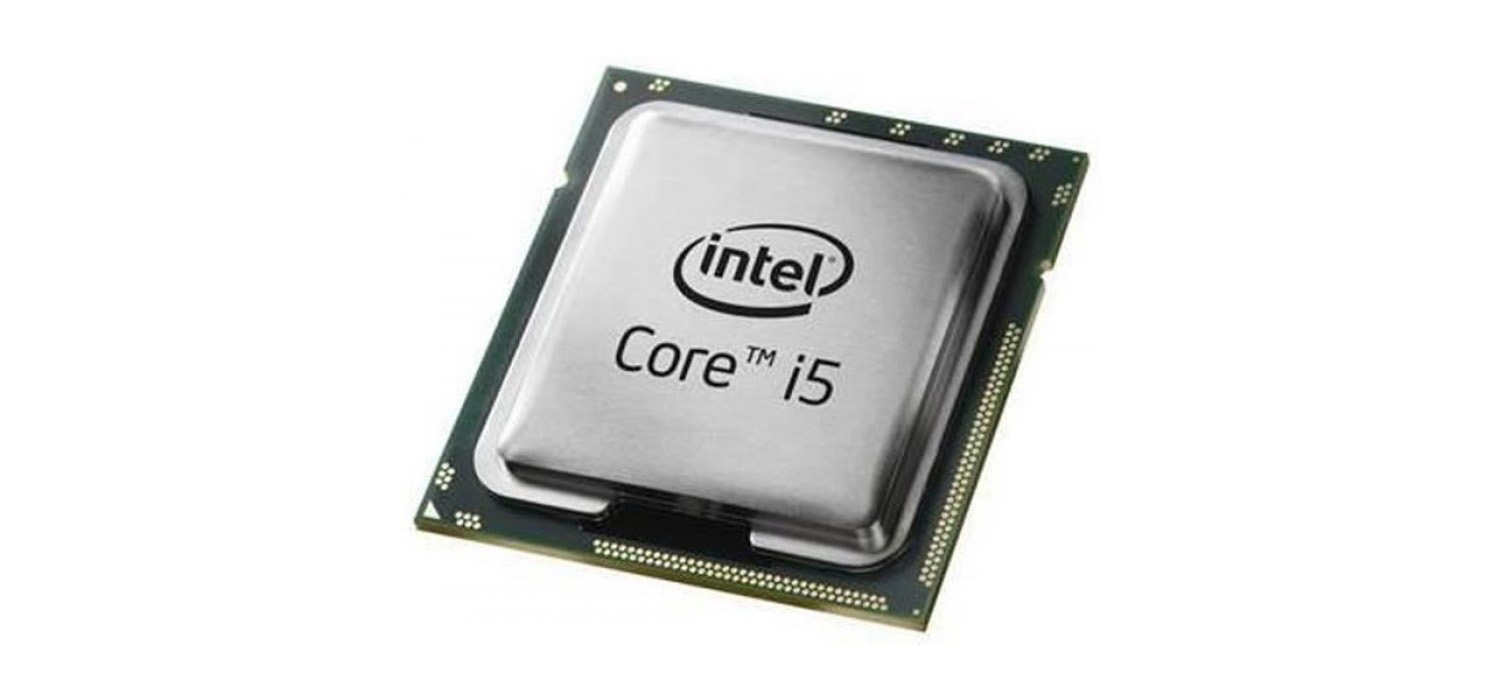
CPU
- Faster CPU speeds up compile/rendering times
- At least a Core i5
- Use integrated graphics for low-end testing
Here’s an area where developers don’t seem to have reached a consensus. Since the CPU is the bottleneck when it comes to compile and render times, some place a high priority on a powerful multi-threaded chip that can crunch through those tasks in minutes, rather than hours. Others would rather spend the extra cash on a GPU instead—again, it comes down to the project you’re working on.
There is at least one element of CPU-picking in which there’s consensus: go for at least a Core i5. At that point you have both decent processing power, and a reasonably powerful integrated graphics option for lower-end testing.
As Democracy 3 and Big Pharma developer Cliff Harris points out, "as a dev, you have to straddle two entirely conflicting demands. You need a PC that runs fast so that your development environment compiles fast and all your work is done super efficiently. On the other hand if you have a better-than-average PC, you are not really testing your game on typical end-user machines on a day to day basis, which is really bad."
Working on a 2D project or in Game Maker 2.0, switching between onboard graphics and a dedicated GPU for testing provides one solution to that quandary. Factoring all that in, we think the Core i5 7400 hits the sweet spot. Affordable current-gen architecture with four cores at 3GHz and a DX12-compatible HD Graphics 630 integrated option.
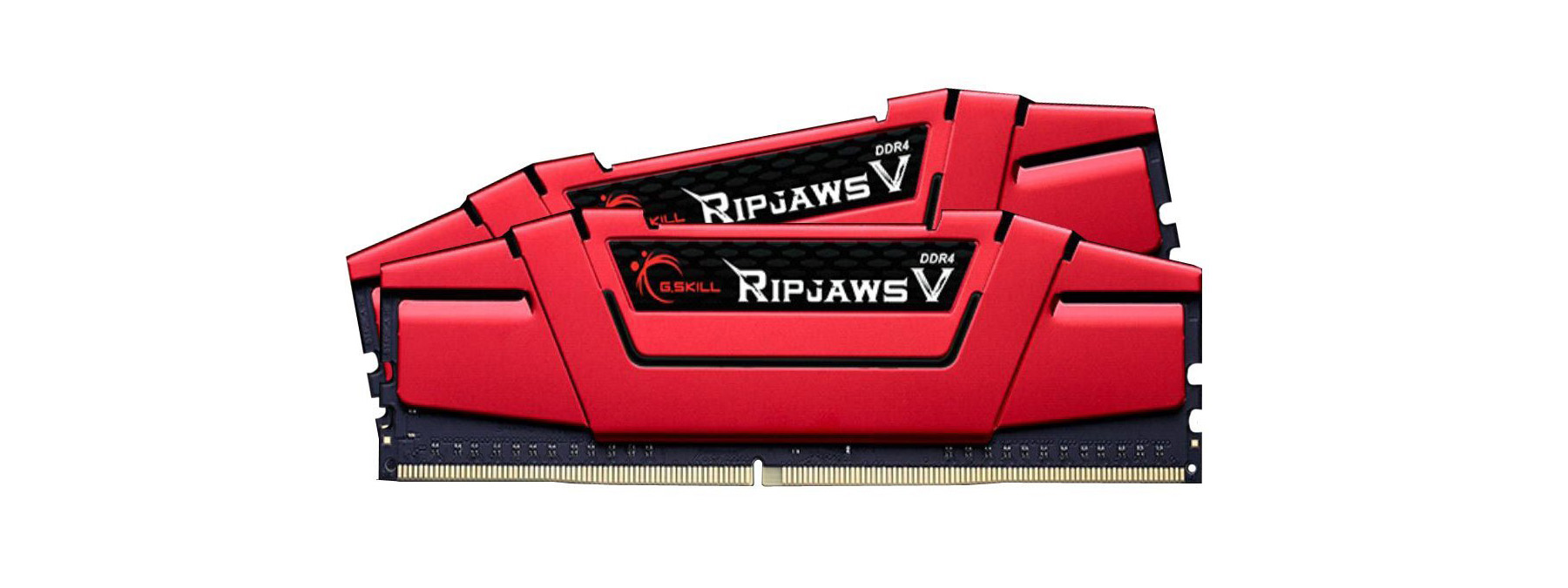
RAM
- 8GB is likely enough for working and gaming
- Enough RAM is important for multitasking
- Don't worry about RAM timings
Another principle that carries over from PC building for gaming is that 16GB of RAM is probably more than you need. All developers we spoke to and forums we scoured recommended no more than 8GB. In fact Harris, who currently has 16GB installed on his machine, told us it was "a waste of money to be honest, I could have stuck with 8GB."
Where RAM comes into its own is when running several powerful applications at once, like your engine tools and third-party programs. The more RAM you have, the more programs you can have operating smoothly at once. 8GB should be ample for most. Remember, Windows will hungrily gobble up more memory if you have a large pool available, but tests have shown that using less has a negligible performance impact.
We’ve gone with a fast and cheap 8GB set from G.Skill here, but you can double capacity to 16GB for only about $50 more if you want to play it safe.
Other components
- Get an SSD. Seriously.
- Big screens help workflow
- Consider a dual monitor setup
With the under-the-hood components taken care of, spend the rest of your budget on a nice, big screen. Then go way over budget and get another. Running several programs on one small panel is no fun, and seriously slows down workflow. "In general I think devs tend to underestimate the importance of a decent size monitor," Cliff Harris tells us. "Preferably two. That boosts your productivity way beyond some extra RAM, or a slightly faster CPU or GPU."
You can spend a lot or a little on a monitor, and our recommendations for the best gaming monitors cover both—high-end 4K and 144Hz displays, and affordable 1080p panels ideal for a dual monitor setup.
The other component we’ve yet to touch on is solid-state storage. For some it might be unthinkable to build a system using only old-school hard disk drives, but it’s worth spelling out all the same: working off of an SSD is really, really going to help. Game dev projects can take up a lot of space, and require tens of thousands of individual assets. If you’re pulling those assets off a HDD or having to transfer them between disks because you’re short on space, it’s time to upgrade to an SSD. We think these are the best SSDs to buy for gaming rigs, and price is one of our main priorities.
Finally, if you don’t have the budget for any of our picks above, or just don’t feel like splashing out on a new PC just now, remember you probably have the hardware to create games with whatever you’re reading this on. Engines such as LÖVE will let you write games using a $15 Raspberry Pi, so don’t let expensive components come between you and that Steam bestseller.
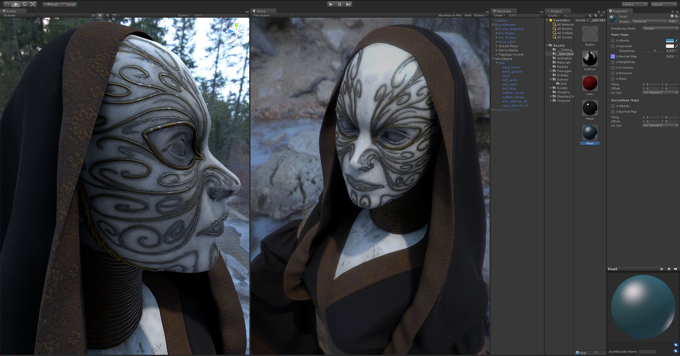
3D game development
When it comes to minimum specs required for performance, Unity is light in its demands much like Game Maker: a DirectX 9 graphics card, and at least Windows 7 SP1. Unreal Engine 4, as you’d imagine, puts more stress on your machine due to the range of 3D effects it offers, many applied to the camera by default. A quad-core 2.5GHZ CPU, 8GB RAM and GeForce 470 GTX/Radeon 6870 HD or higher and recommended by Epic.
But for making 3D games, you'll want better than those parts. Here's the breakdown.

Graphics card
- Dedicated card strongly suggested
- DirectX 11 compatible and onwards
- At least 2GB of video RAM
Unlike with 2D development, getting by with integrated graphics isn't as easy here. A dedicated graphics card will help you out a lot, especially in a powerful engine like Unreal Engine 4. If you’re developing in UE4, you really can’t have too much GPU power. You want to be able to navigate environments smoothly and turn all the lighting effects up while you’re working, and only a meaty dedicated GPU can do that for you.
A great big GTX 1080 will be a huge help in crunching all the post-processing effects, lighting, and shadows. Why Nvidia? It’s not that team green’s cards are necessarily better for developing with. However its dominant market share position means that if you’re testing your game on an Nvidia card, you’re testing on hardware that your audience is more likely to be using.

CPU
- A faster CPU helps speed up heavy compile/rendering times
- At least a Core i5 for 3D work
- Use integrated graphics for low-end testing
Unlike the GPU section, there's not an immediately obvious difference in the needs for 2D and 3D development, here. That means this section is mostly a repeat of the same information for 2D development. Since the CPU is the bottleneck when it comes to compile and render times, some devs place a high priority on a powerful multi-threaded chip that can crunch through those tasks in minutes, rather than hours. Others would rather spend the extra cash on a GPU instead.
There is at least one element of CPU-picking in which there’s consensus: go for at least a Core i5. At that point you have both decent processing power, and a reasonably powerful integrated graphics option for lower-end testing.
As Democracy 3 and Big Pharma developer Cliff Harris points out, "as a dev, you have to straddle two entirely conflicting demands. You need a PC that runs fast so that your development environment compiles fast and all your work is done super efficiently. On the other hand if you have a better-than-average PC, you are not really testing your game on typical end-user machines on a day to day basis, which is really bad." A secondary lower-end system like a laptop could help you do that testing without sacrificing productivity.
For working on more demanding 3D projects in UE4, we think it's worth upgrading to a Core i7 to help keep the compiling and rendering times down. While multiple cores and higher multithreading performance still aren't that important for playing games, heavy creative tasks (and video software like Adobe Premiere, an important tool if you're making videos of your own game) can take advantage of an i7's extra power.

RAM
- 16GB will support multiple heavy workloads
- Enough RAM is important for multitasking
- Don't worry about RAM timings
Another principle that carries over from PC building for gaming is that 16GB of RAM is probably more than you need. All developers we spoke to and forums we scoured recommended no more than 8GB. In fact Harris, who currently has 16GB installed on his machine, told us it was "a waste of money to be honest, I could have stuck with 8GB."
Where RAM comes into its own is when running several powerful applications at once, like your engine tools and third-party programs. The more RAM you have, the more programs you can have operating smoothly at once. Unreal Engine 4 recommends 8GB of RAM. So do 3D Studio Max and Maya, while Photoshop can run on 2GB but also recommends 8GB.
Using any of those programs individually should be just fine on 8GB, but 16GB will give you the overhead to run several at once without compromise. If you're doing a lot of 3D modeling work and running Unreal Engine 4 simultaneously, go with 16GB. If you really need to save cash, you can drop down to 8GB for about $50 less.
Other components
- Get an SSD. Seriously.
- Big screens help workflow
- Consider a dual monitor setup
With the under-the-hood components taken care of, spend the rest of your budget on a nice, big screen. Then go way over budget and get another. Running several programs on one small panel is no fun, and seriously slows down workflow. "In general I think devs tend to underestimate the importance of a decent size monitor," Cliff Harris tells us. "Preferably two. That boosts your productivity way beyond some extra RAM, or a slightly faster CPU or GPU."
You can spend a lot or a little on a monitor, and our recommendations for the best gaming monitors cover both—high-end 4K and 144Hz displays, and affordable 1080p panels ideal for a dual monitor setup.
The other component we’ve yet to touch on is solid-state storage. For some it might be unthinkable to build a system using only old-school hard disk drives, but it’s worth spelling out all the same: working off of an SSD is really, really going to help. Game dev projects can take up a lot of space, and require tens of thousands of individual assets. If you’re pulling those assets off a HDD or having to transfer them between disks because you’re short on space, it’s time to upgrade to an SSD. We think these are the best SSDs to buy for gaming rigs, and price is one of our main priorities.
Finally, if you don’t have the budget for any of our picks above, or just don’t feel like splashing out on a new PC just now, remember you probably have the hardware to create games with whatever you’re reading this on. Unreal Engine 4 is free, so there's nothing stopping you from giving it a try.
Keep up to date with the most important stories and the best deals, as picked by the PC Gamer team.
Phil 'the face' Iwaniuk used to work in magazines. Now he wanders the earth, stopping passers-by to tell them about PC games he remembers from 1998 until their polite smiles turn cold. He also makes ads. Veteran hardware smasher and game botherer of PC Format, Official PlayStation Magazine, PCGamesN, Guardian, Eurogamer, IGN, VG247, and What Gramophone? He won an award once, but he doesn't like to go on about it.
You can get rid of 'the face' bit if you like.
No -Ed.


